GET your
free 2025 Milky Way calendar
with the best dates by location
+ the complete guide to photographing the Milky Way
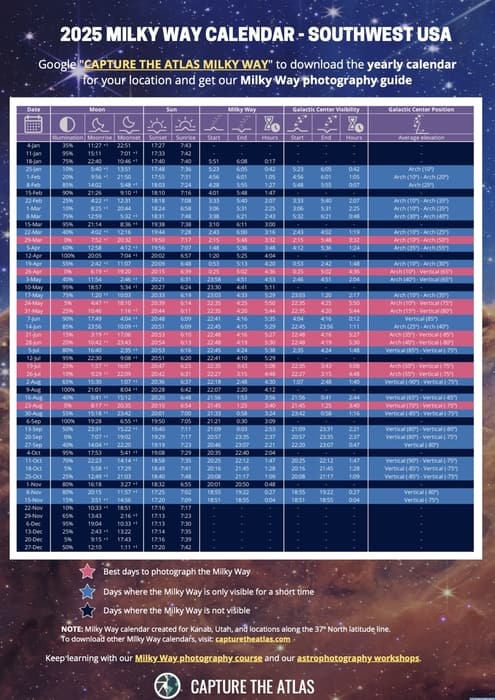
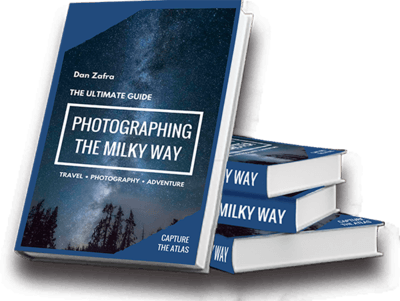
+ Bonus: the Ultimate Guide to Photographing the Milky Way
+ Bonus: the Ultimate Guide to Photographing the Milky Way
Having a Milky Way Calendar is a key tool when you are planning new images and trips.
We all know the importance of planning when you want to photograph the Milky Way. Our galaxy is visible for a certain period of time depending on the month, day, time of day, and latitude. Knowing when is the best time to see the Milky Way in your location is important, but there are more factors to consider.
To help you, we create these Milky Way viewing calendars every year where you can see, at a glance, the best days to photograph the Milky Way in your location.

2025 Milky Way Calendar Capture the Atlas
Understanding how these 2025 Milky Way Calendars work is super simple. Below, I’ll show you which calendar is best for you and a few tips on how to use them. (I’ve also attached a video tutorial where everything is explained).
We always create Milky Way calendars for 24 different regions on Earth, so it’s very likely that there’ll be a specific Calendar for your area:
Besides, our Milky Way calendars are based on latitude, so even if there isn’t a calendar for your area, you can still use a calendar from the closest latitude. The data and best days to shoot the Milky Way will be the same; you just have to consider any possible time difference.
You can see the latitude in our list of Milky Way calendars as well as in the bottom-right corner of each calendar:
As an example, if you want to photograph the Milky Way in Cape Town, South Africa:
If you live in a big country with regions at different latitudes, search for your specific location.
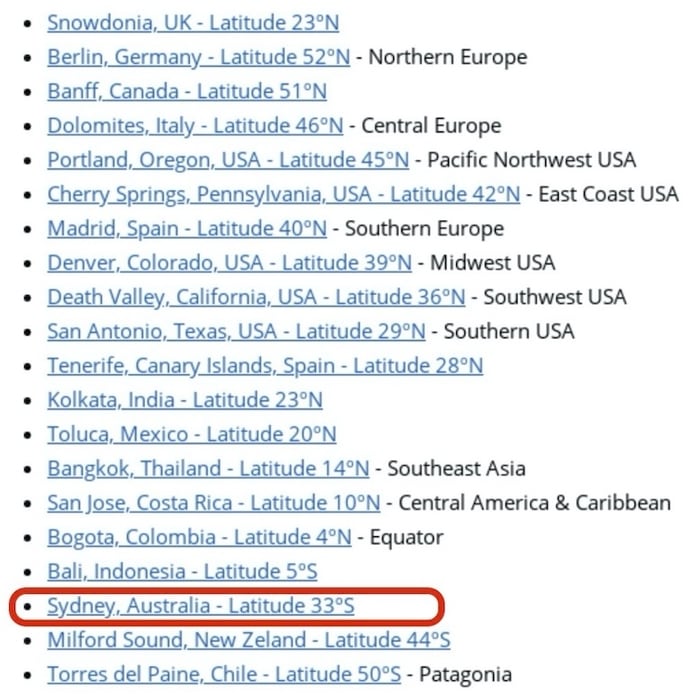
As you can see, Sydney is located at the closest latitude to Cape Town. Therefore, the Australia Milky Way calendar, which is based in Sydney, would be the most accurate for your location.
Each 2025 Milky Way viewing Calendar shows the most relevant data you have to consider to see the Milky Way. From left to right, the columns will show you:

Our Milky Way almanac takes as a reference every Saturday night of the year. Please note that, as a rule of thumb, the two days before and two days after each Saturday will be similar.
Ex. If Saturday, June 21st, 2025 is one of the best days to shoot the Milky Way, Thursday the 19th, Friday the 20th, Sunday the 22nd, and Monday the 23rd will also be good days.
The moon is one of the key elements affecting Milky Way visibility. Here you’ll find:
Here you’ll find the sunset and sunrise time at that particular latitude. The Milky Way can only be visible in that timeframe.
The time the Milky Way is in the sky. In these columns, you’ll find the start and end time as well as the total number of hours.
This is the most important column. It considers the time the Galactic Center is visible considering all the previous factors.
Here you’ll find the start and end time where you’ll be able to see and shoot the Milky Way in the sky, as well as the total number of hours.
The number of hours also determines the best days to shoot the Milky Way, which are marked in three different colors:
We only consider the “best days” to be those with 3+ hours of Milky Way visibility. Please note that some regions like Northern Europe, the UK, and Canada don’t have “best days” marked in red since the max. Milky Way visibility is below 1.5 hours.
The last column of our 2025 Milky Way planner shows the Galactic Center elevation in the sky. Here you should consider the following:
When you see a negative value like “Vertical (85º) – Vertical (-80º)”, it means that the Milky Way starts being visible at 85º, and it moves until it’s completely vertical at 90º, then moves until it disappears at 80º but on the other side of the sky.
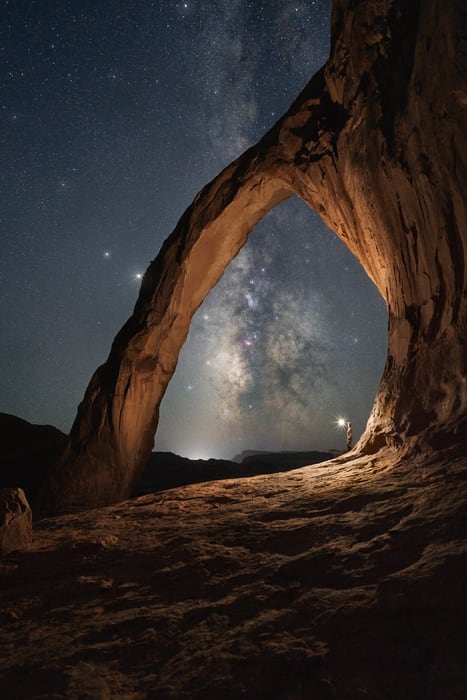
Vertical Milky Way band at 90º
After downloading your Milky Way astrophotography chart to plan your night photography sessions, I also recommend checking a few more things so you can capture the best possible images:

I hope our 2025 Milky Way calendars help you plan your night photography sessions this year.
If you have any questions about which Milky Way planner you should download, how to use them, or you’d like to propose a Milky Way calendar for a new region or location, feel free to leave it in the comments!
Happy shooting and clear skies!
PS. You can keep learning with my Milky Way photography course and in the field on our Milky Way astrophotography workshops & tours!


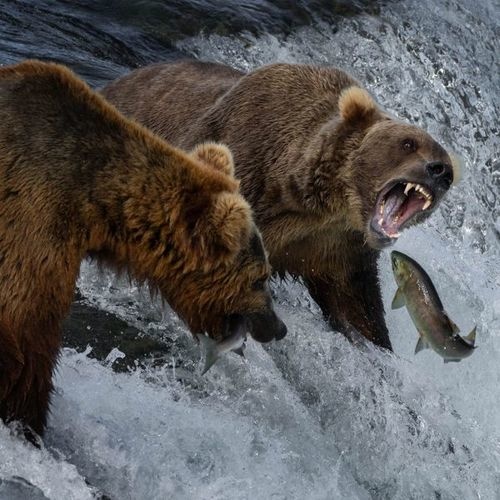
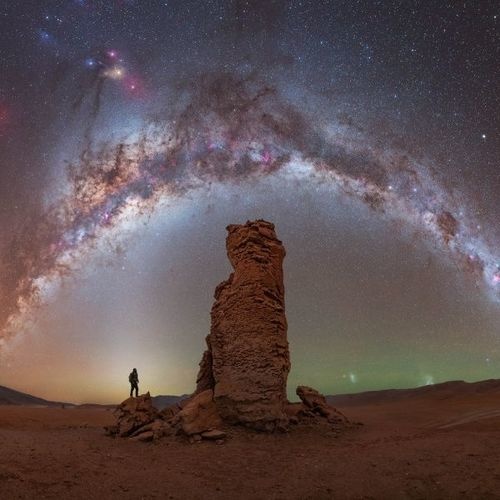
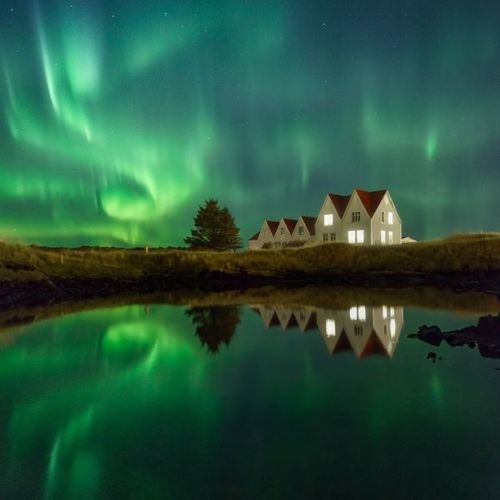
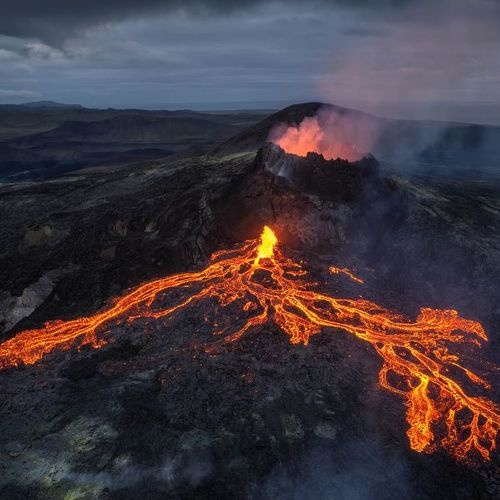

Follow our adventures and trips on instagram
© 2025 CAPTURE THE ATLAS | Photography · Travel · Adventure | ALL RIGHTS RESERVED


When will the 2024 calendar be released? Thanks for posting these!!!
You’re welcome, Dave! The 2024 milky way calendar is already out! Please check your email 🙂
Thanks Dan for creating the 2023 Milky Way Calendar, it was a great tool!!! I met you at the Night Scaper conference this past May and learning about your calendar. was wondering will you have a 2024? Thank You!
Lucia, the 2024 Calendar is already out! Every year we create new Milky Way Calendars 😀
Hi guys. Super keen for 2024! To help me plan my travels, when may you be launching your 2024 calendar?
Hi Jase, the calendar is already available. Please check your email if you’re already subscribed to our newsletter 🙂
Will you be making a 2024 calendar?
If so, any idea when this would be available?
Hi Michael, yes it’s already available. Please check your mail inbox if you’re already subscribed to our newsletter 🙂
Hello Dan! We just had to cancel our trip out west due to a very sick pup. We plan to reschedule next year. When will the 2024 Milky Way calendar be available? Am I correct from looking at moon charts that it should be visible April 5-12? Thank you for all you do!
Sarah, the 2024 MW Calendars are already available. Check your email if you’re already subscribed. That’s correct, the milky way will be perfectly visible during those days 😉
I am trying to download updated milky way calendars as I previously registered and downloaded those for previous years. We are getting ready for a trip to N. Dakota, northern Minnesota and northern Wisconsin in the latter part of this month (September) and would like to get the updated US mid-west calendar (I think that is the most appropriate). But when I enter my information again I don’t receive an email this time. Is that because I have already registered? What is the best way to get updated calendars each year?
Thanks for your assistance.
Hi Bill,
If you’re already signed up our newsletter, you should have received an email from us at the beginning of each year with the new Milky Way calendar. Please check your inbox and the spam folder.
Best,
Dan
This is great information, thanks! I’m in the Highlands of Scotland 57°28′ N and since there isn’t a calendar for this far north I am wondering if we just can’t see the galactic bulge from here? How far south would I have to go to try to catch a shot of it?
Hi Lesley, the Milky Way in Scotland can be visible from April to September. However, you won’t see the Milky Way core at all and around mid-summer the night skies are just too bright.
You should go at least Southern UK to see the MW core. At Dorset for example is great area.
Hope it helps,
Dan
Thank you for all of the valuable information and calendar for 2023, I successfully was able to both see and photograph the Milky Way this past weekend and very much appreciate all of the material that is available on your web site
When will the 2024 calendar be available? 🙂
Hi Melissa, it’s already here 😉
404 on the download.
John, it’s fixed now. 😉
Hi Dan (and Ascen),
First off thanks so much for the invaluable Milky Way Calendars and also for the incredible amount of advice/tips/information on your website. Absolutely first rate! I am planning a trip in March 2024 to Tromso and the Lofoten Islands in Norway and Iceland. The latitudes range from 63 – 70 degrees north. Any chance you have information for those regions and if not could you point me to a website that might have such information? Thanks again for the info and inspiration!
Dean
Dean,
Thanks for your nice words! I’m afraid you can’t see the Milky Way Core at those high latitudes!
Hey Dan –
We need to book a trip for 2024. Is there an offset we can use with the 2023 calendar to find the best dates? Thanks.
best,
rick
Rick,
The calendars completely change from year to year, so you can’t use the 2023 Calendars for planning trips in 2024.
Hi, you have nothing in Africa yet we have some of the clearest skies in the world because of our open areas other than in the first world countries that you mention.
Johan,
This is not a matter of first world vs. third world; we create calendars based on demand from our community and we explain how to use the calendars in other places on Earth based on the latitude, including any African countries.
Is the 2023 edition come out Jan 1 or Jan 6? You’ve said first Sunday of the new year but didn’t say which Sunday. Thanks for doing this by the way!!!
Always on the first Sunday of the Year but this was an exception being the first Jan 1! 😉
Do you have a Milky Way calendar for 2023?
Hey Siri, we update our calendars every year 🙂
The time (EST/EDST etc. etc.) still seems to be a confusing issue.
The time on your chart for a particular latitude is different than the time
in my zone. I’m not certain how to compute the correct time
for my particular location from what the time shows on your chart.
Hi Bill, you should be able to do it following the instructions we write here or just check out this video.
Hey,
Quick Question:
For Vancouver BC, do we use Banff or Portland, we are kind of in between-ish but Portland shows good dates for view and Banff shows no good dates for 2022
Rafael,
I recommend downloading the closest Milky Way Calendar to your latitude; in this case from Vancouver (49º North), The Canada Calendar based in Banff.
Hope it helps!
Dan
The download buttons don’t work. Can you email me Torres del Paine for June 1 2022? Thanks so much!
Matt,
There was a technical issue on our web but you can download your Milky Way Calendar now 😉
Dan
Hi Dan
Are you able to send me a Milky Way calendar for Far North Queensland, Australia?
Dianne,
You can download your Australia Milky Way Calendar following the form at the beginning of the article 😉
Best,
Dan
Hi! I receive your emails and have tried downloading the 2022 PNW Milky Way Calendar, but it keeps taking me back to the webpage to sign up for emails. Could you email me the calendar please? 🙂
Hayden,
I sent you an email with our Milky Way calendars 😉
Hi Dan,
I was wondering why there is such a big gap in where the Milky way is not visible in Banff from May to July?
Thanks so much, I rely on this a lot for my planning sessions, its been very helpful!
Christine,
The main reason is that during the summer, there is too much light at a high latitude like Banff and you won’t get any darkness, just some twilight.
Best,
Dan
Hi Dan – I am keen for a calendar for Fiji – which is 17 deg S – and the closest is either Sydney or Bali, but there is a big gap between them. How do I determine when the milkyway will be visible in Fiji?
Thanks,
Sara
Sara,
Get the closest Milky Way Calendar to your location. Even if there’s a significant gap, the difference won’t be drastic and most times will be the same 😉
We’ll create a specific calendar for that latitude for 2023.
Best,
Dan
Hi Dan,
I have been trying to download your calendar for Australia, but unable to do so from your webpage. Could you send me one for Australia 2022, please? Thank you so much.
Ashley (Usanee) McHugh
Ashley,
I sent you a copy of our Australia Milky Way calendar by email.
Hope it helps!
Dan
Hi. Is the 2022 Milky Way Calendar still available? When I click download I keep getting a 404 page is on vacation error. The 2021 calendar was so helpful last year. Thank you for doing them!
Hi Laura,
Yes, the 2022 Milky Way Calendar is available. If you got a 404 error it must be due to a problem in the loading. Try again and feel free to send me an email and I’ll reply with a copy if it doesn’t go through 😉
Read this whole page but still cannot find a radio button to D/L the one for the USA East Coast. :/
You should be able to download your Milky Way Calendar following the instructions on the top of the page.
Hi Dan
I am having trouble downloading the calendar for Sydney Australia
Can you confirm how to attend to the download
Thanks
Trevor, sometimes there’s a longer loading time, but you should be able to download it. If you can’t, try with another email or send us an email and I’ll send a copy.
Best,
Dan
Hello! We are traveling to visit Oak Island NC from Feb 8-16. I read that it’s a great place to view the Milky Way, along the beach or out on the pier. So I would want to use the Southwest USA (Death Valley) map since Oak Island is at 33 degrees N latitude. The Oak Island Pier is at 33.9 degrees north. My question is, the times shown are the same no matter where you are right? Oak Island is 3 hours ahead of Death Valley, CA, and the Galactic Center is visible for 10 minutes on Feb 12, from 5:01 AM to 5:11 AM, which will be my only chance to see it. (The Arch is 30 degrees, will it still be visible?). So I should still go out to the shore at 5 AM EST (time zones don’t matter)? With only a 10 minute window I don’t want to miss it. Also, is the small difference in latitude (33.9 vs 36) important for what time the galaxy is viewable?
Stephanie,
Our Milky Way Calendars are based on latitude, so even if you’re at a different time zone the times will be the same (just consider the Daylight saving time in those two days where the clocks are changed every year).
A difference of 3º in latitude is not significant; times may vary a couple of minutes but you won’t notice a big difference.
Hope you have a successful Milky Way session!
Dan
I’d like to see a calendar for N56 as it would cover Scotland.
Sally, That’s too far north to see the Milky Way core!
I would like to see a calendar for Shetland at 60 degree north. I run Shetland Aurora Hunter (Facebook) with over 6800 member so i am sure it will be well used – thanks Richard
Richard,
We don’t have any calendars for that latitude since the Milky Way Core is barely visible at that latitude.
The most approximate chart that I recommend using from Shetland is the UK Milky Way Calendar 😉
Hello Dan, its mid October so I’m late for the season but when will there be a 2022 calendar?
Beginning of 2022 😉
Hi Dan,
Maybe a silly question. I noticed that for UK, the calendar shows about 16mins visibility of Milkyway on the 9th of October. But the night is completely dark. Why will it not be visible throughout the night?
Ratnavel,
October 9th is marked in blue in the calendar since there are just a few minutes of Milky Way visibility 😉
Hi Dan are you planning on creating 2022 calendars and if so when are they usually released
Always on the first Sunday of the new year 😉
So, how low can I go…
I have a move-shoot-move guider, D7100 with Tokina 11-16 F2.8. I’ve shot the Milkey Way using 1min@ISO400, 4min@ISO4200 @F2.8 11mm exposures, and had OK results. I usually shoot 20 or so and stack processed images with Sequator. So, is the higher ISO more important than the exposure time to get more data…or is it a better trade-off to reduce the noise at the lower ISO. I’m stuck on lower ISO being less sensitive…or is it reasonable that the lower ISO and longer exposure yields similar results?
The reason to ask, it seems my unprocessed images are a bit over exposed (even at 1mISO400). The histogram has two small peaks, all to the right.
ron
Ron, when you are tracking it’s completely normal to have a more exposed image with two defined bumps in the histogram; one towards the left and another towards the midtones. In untracked images, the histogram is usually a single bump starting from a curve pushed towards the left.
Make sure that you have pinpoint stars and that you are not overexposing areas in the Milky Way core (to check this, the zebra peaking is very useful).
I hope this helps and if you want to dive deeper into this I have very extensive tutorials on my Milky Way tracking course.
Happy shooting & clear skies!
Dan
Do you know when you will put together 2022? Trying to plan a trip to Utah in March and want to make sure I time things out right!
First Sunday of the new year! 😉
The map and the guide are really helpful. I am going to Mideast USA this weekend trying to see the milky way. It’s my first time and I really hope I can catch it. Thank you for your resources.
Thanks Mary! I’m happy to see that it helped you!
Good Day Dan!
Can you please advise which cities/towns are best to view Milky Way in July’2021 in Northern USA.
regards
T
Look into places away from light pollution. You can find more info about this on my Milky Way photography guide 😉
I’m a bit confused about how to read the galactic center position.
One of the calendars shows a date with “Arch (25º) – Vertical (90º)”
And another date has “Arch (45º) – Vertical (-75º)”
I am wondering if the former (90º) is visible in one direction of the sky, and the other (-75º) is visible in the other direction?
Nkkie,
Exactly, when you see a negative value it means that the Milky Way has reached the 90ª position and the band now it’s tilted towards the other direction in the sky 😉
Hi Dan,
Thanks for providing these calendars. Could I confirm, that the time zone doesn’t matter when reading these charts and it will always be as of local time? For example, if I take Oregon’s calendar which is in PST, and it says 23:37 PST as the time the galactic center becomes visible, and I’m located in Ontario in the EST time zone, that it will be 23:37 EST, and not 2:37 EST (23:37 PST)?
Thanks!
Julius
Julius,
All calendars are always based on local time! 😉
I would like to see a Milky Way calendar for Namibia.
I am going there in late June.
Hi Ken,
We’ll definitely try to create a Namibia Milky Way Calendar for 2022. In the meantime, you can download and use the Sydney Calendar since it’s the closest place in terms of latitude.
Best,
Dan
Hi Dan,
When will you release Milky Way calendar 2022? May you add Milky Way calendar for ASEAN countries?
David, It’ll be ready at the beginning of the New Year! I’ll send you a copy as soon as it’s available if you’re subscribed to our newsletter.
I have to admit, I’m a little confused about the angle. Is this how far above the horizon the center is? Is it the angle of the milky way in the sky? Overall though, thanks for these! It is a great help as I start on my night sky photos.
Hi Paul,
Yes, that column is related to the angle of the Milky Way over the horizon. That way, using our Milky Way Calendars you can plan when to shoot the Milky Way as an arch or as a diagonal/vertical band in the sky.
Hope our Milky Way charts help!
Dan
Sir I cannot download it. I would like the 2021 Southwest USA Milky Way Calendar please. It just leads to a 404 page after I input my email.
Hi George,
We had a technical issue on our site, you should be able to download your USA Milky Way Calendar now 😉
Happy shooting and clear skies!
Dan
This looks great, hoping to shoot it this season from mid-central Illinois, Tank You Dan.
With no specific mention otherwise, am I to assume the times shown (USA) both standard and daylight savings time as appropriate to the calendar?
Thanks Dan!
Yes, our Calendars are created considering the DST and other time changes in the local area that we take as a reference.
Hope this helps and clear skies!
Dan
Dan, you are a legend. Thanks for all these very helpful resources. I’m looking forward to shoot some good Milky Way photos around Sydney this year!
Thanks Anthony! Hope it helps to capture great images this season!
You have some very cool and dark locations not far from Sydney 😉
Happy shooting and clear skies!
Dan
That is sooooo useful!
Thanks a lot mates, this information, all well published and clear, worth a lot!
Regards from Girona (Spain)!
Thanks Albert! Hope it helps capture great images this Milky Way season!
Clear skies!
Dan
Legends ? thanks a lot for this super useful tool!
Thanks JL! Take some awesome Milky Way photos in Australia this season! 😉